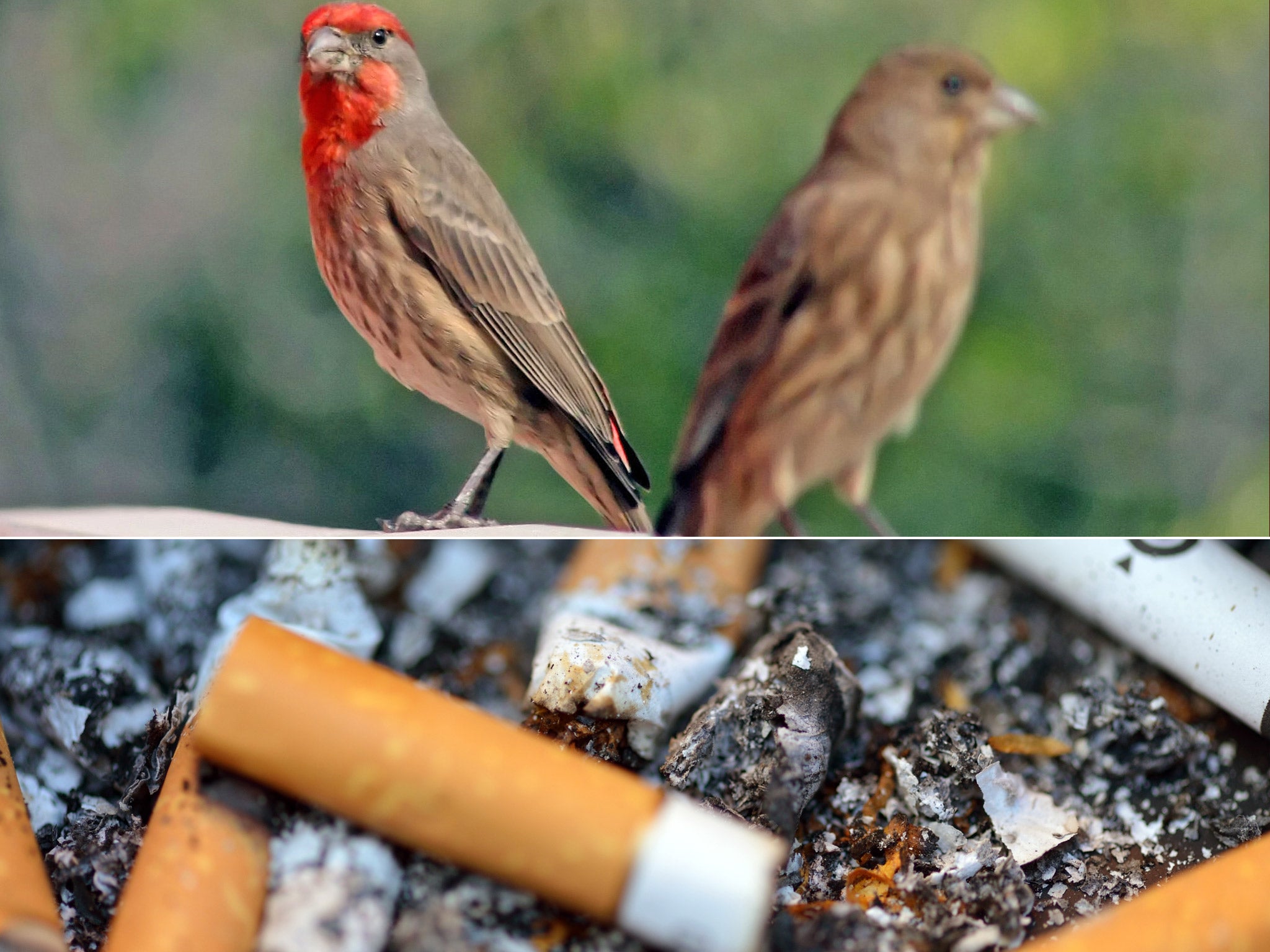Marlboro palace: how city birds feather their nests
Nicotine-rich cigarette ends that repel parasites are the perfect building material for finches

Your support helps us to tell the story
From reproductive rights to climate change to Big Tech, The Independent is on the ground when the story is developing. Whether it's investigating the financials of Elon Musk's pro-Trump PAC or producing our latest documentary, 'The A Word', which shines a light on the American women fighting for reproductive rights, we know how important it is to parse out the facts from the messaging.
At such a critical moment in US history, we need reporters on the ground. Your donation allows us to keep sending journalists to speak to both sides of the story.
The Independent is trusted by Americans across the entire political spectrum. And unlike many other quality news outlets, we choose not to lock Americans out of our reporting and analysis with paywalls. We believe quality journalism should be available to everyone, paid for by those who can afford it.
Your support makes all the difference.It sounds like a surreal urban myth: birds in cities may be deliberately incorporating cigarette ends into their nests to ward off insect parasites. But scientists in Mexico offer compelling evidence that it is true.
They show that an archetypal item of street litter, up there with Styrofoam curry cartons, pizza boxes and burger wrappers as a pavement annoyance, may offer remarkable medicinal properties – if you're a bird.
The nicotine – known as a powerful natural insecticide – deposited in cigarette filter tips though smoking is thought to be keeping damaging parasites such as mites at bay. Many birds can be badly affected by parasitism: by ectoparasites, bugs on their external feathers and skin such as mites, lice, ticks and fleas, as well as by endoparasites, bugs inside them such as worms. Nest infestations, especially by blood-sucking insects, can be so severe as to cause nests to fail and chicks to die.
The evidence that birds have found a novel way to combat the problem comes from a team of researchers at the National Autonomous University of Mexico and their study of two urban bird species: the house finch and the house sparrow, common in many North American cities.
Both often use the cellulose from discarded cigarette ends to line their nests, and when the researchers spent a breeding season monitoring nests in Mexico City, they found that the more cellulose a nest had, the fewer mites it contained.
Furthermore, when parasites were attracted to heat traps containing smoked and unsmoked cigarette ends, fewer parasites reached the former – "presumably due to the presence of nicotine," the researchers said.
Their findings, reported in the current edition of the Royal Society journal, Biology Letters, support the recent discovery that some birds are capable of "self medication" and often bring green plant material to the nest, especially from aromatic plants, which is thought in some way to protect nestlings.
As for nicotine, it has long been known as a powerful natural insecticide, and its presence in the tobacco crop has evolved to deter pests; it is toxic to virtually all of them (except one, the Carolina sphinx moth, whose fat green caterpillar has evolved a way of dealing with it).
Keen anti-smoking readers who worry that dozens of gaspers will have had to be smoked to provide the nicotine-rich fag ends used in the research may be reassured. The researchers state that: "to standardise the experimental treatment, smoked filters were obtained from a single 400-pack of regular filter cigarettes [Marlboro] consumed by an artificial smoking device."
Or to put it another way, no humans were harmed in the carrying out of this experiment.
Join our commenting forum
Join thought-provoking conversations, follow other Independent readers and see their replies
Comments